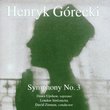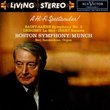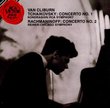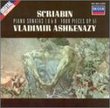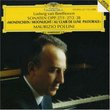| All Artists: Pyotr Il'yich Tchaikovsky, Richard [Classical] Wagner, Wilhelm Furtwängler, Berlin Philharmonic Orchestra Title: Tchaikovsky: Symphony No. 6 "Path�tique", Wagner: Tristan und Isolde (Prelude & Liebestod) Members Wishing: 0 Total Copies: 0 Label: Naxos Release Date: 2/17/2004 Genre: Classical Styles: Opera & Classical Vocal, Historical Periods, Modern, 20th, & 21st Century, Symphonies Number of Discs: 1 SwapaCD Credits: 1 UPC: 636943186527 |
Search - Pyotr Il'yich Tchaikovsky, Richard [Classical] Wagner, Wilhelm Furtwängler :: Tchaikovsky: Symphony No. 6 "Path�tique", Wagner: Tristan und Isolde (Prelude & Liebestod)
 | Pyotr Il'yich Tchaikovsky, Richard [Classical] Wagner, Wilhelm Furtwängler Tchaikovsky: Symphony No. 6 "Path�tique", Wagner: Tristan und Isolde (Prelude & Liebestod) Genre: Classical Sometimes the sound quality of a recording is less important than the performance. That's the case with these two classics of the phonograph, recorded in 1938. Since its first publication, Furtwängler's "Pathétiq... more » |
Larger Image |
CD DetailsSynopsis
Amazon.com Sometimes the sound quality of a recording is less important than the performance. That's the case with these two classics of the phonograph, recorded in 1938. Since its first publication, Furtwängler's "Pathétique" has been recognized as a unique achievement, bringing out the full emotional quality of the music without ever veering off into sentimentality or eccentricity. It's one of those performances when everything goes right, amazing in the continuity of its effect, especially since it was recorded in four-minute takes on 78 rpm discs. The Wagner performance is no less remarkable. Ideally we might wish for more detailed, less richly rounded sound quality, but restorer Mark Obert-Thorn has given us better sound than these recordings have exhibited before, and it's fascinating to read his brief comments and the number of copies of each record he used (five!) If you love this music, no matter what other performances you've heard, you will still find something new and valuable in this CD, which is worth much more than it costs. --Leslie Gerber Similarly Requested CDs
|
CD ReviewsFabulous Sound in These 1938 Recordings by Furtw�ngler J Scott Morrison | Middlebury VT, USA | 02/26/2004 (5 out of 5 stars) "The first thing one notices about these reissues from 1938 is the wonderful sound for the period. We can give some credit to the German engineers of the time, but much also to transfer wizard, Mark Obert-Thorn, who painstakingly transferred from near-pristine American, English and French 78s. There is some preserved surface noise but it is minimally distracting; meanwhile, the tonal range is very impressive. And of course these performances by the Berlin Philharmonic are superb. But it's Furtwängler's conducting that makes these performances worthwhile.I have not always been the most avid fan of Furtwängler; I'm certainly not among that number who seem to think he could do no wrong. But in certain repertoire he was sensational, and in these two works that term applies. Both the Pathétique and the Wagner Prélude and Liebestod require sensitive flexibility of tempos and dynamics, and of course Furtwängler was renowned for his preternatural skill at that. Probably the only place that I get a little out of sorts with him in these two works is that place in the third movement of the Tchaikovsky leading up to the whirling scalar passages in the strings at measure 221 where Furtwängler speeds up hysterically and then rather too dramatically slows down for the almost ponderous final appearance of the march theme at m. 229. It made me a little seasick. But then we're in for one of the most moving Tchaik 6 final movements every recorded, and the Berlin strings give him a silken yet vibrant tone that perfectly matches the music's emotionality without becoming maudlin. And Furtwängler's third-movement excess is immediately forgiven. I cannot say enough about how wonderful this transfer makes the BPO strings sound. And, for that matter, the winds and brass are caught in extraordinary similitude. It's no wonder these performances have never been long out of the catalog in one incarnation or the other. As for the Wagner, what can I say? Is there really any other conductor of Wagner who can match Furtwängler? Much as I love the (more or less) modern sound of the Solti and other 'Ring' recordings, I often go back to the 1937 Covent Garden 'Ring' excerpts with Flagstad and Melchior. In the Prélude to 'Tristan' Furtwängler's famous seemingly indecipherable and fluttery beat is translated somehow by the orchestra into time-stopping ecstasy; one simply wouldn't be aware, absent a score, that this is in plain old 6/8, but one is certainly aware of the emotionality of the score. The 'Liebestod' is similarly voluptuous. Furtwängler conducts this music like the composer he was, as if it was issuing spontaneously from him and his orchestra. The ebb and flow of the music is conveyed, to my mind, absolutely convincingly. This is my favorite recording of this music, bar none. So, having said that the sound is fabulous for its time, and that Furtwängler is in superb form, I can only ask why, particularly at this bargain-basement price from Naxos (in what appears to be the first in a forthcoming series of Furtwängler reissues), you haven't already ordered it? TT=67:05Scott Morrison" Classic Furtwangler Santa Fe Listener | 03/27/2004 (5 out of 5 stars) "The music is superb, of course, but it is hard to believe how good, and natural, these old recordings sound--almost like decent 50s mono--kudos and thanks to Naxos for releasing these timeless performances." Valid performances for all time. John Austin | Kangaroo Ground, Australia | 03/09/2004 (5 out of 5 stars) "A small series of recordings made in the late 1930s in Berlin proved to be of major significance. They carried to name of German conductor Wilhelm Furtwaengler to all parts of the world; they established that the Berlin Philharmonic was one of the world's best orchestras, and they guaranteed that if a complete recording of "Tristan und Isolde" were to be made, then Furtwaengler should be invited to conduct it. The complete recording materialized in 1952, but Furtwaengler never attempted a re-make of his 1938 recording of Tchaikovsky's Sixth Symphony. Furtwaengler has an overall vision of the symphony's bleakness and sense of despair. Every subtle tempo fluctuation (and there are many, especially in the first movement) is addressed to helping achieve this vision. Virtuosity and brilliance are not displayed for their own sake, although Furtwaengler manages to ensure that a trumpet semi-quaver cuts through the heavy orchestral texture at Bar 246 in the first movement more accurately and tellingly than I have ever heard in other performances. Mark Obert-Thorn's restoration work is exemplary. Some of the playing, especially in the Wagner performance, is very soft indeed, but even the tiniest signal emerges clearly here, well forward, and free of surface hiss."
|



